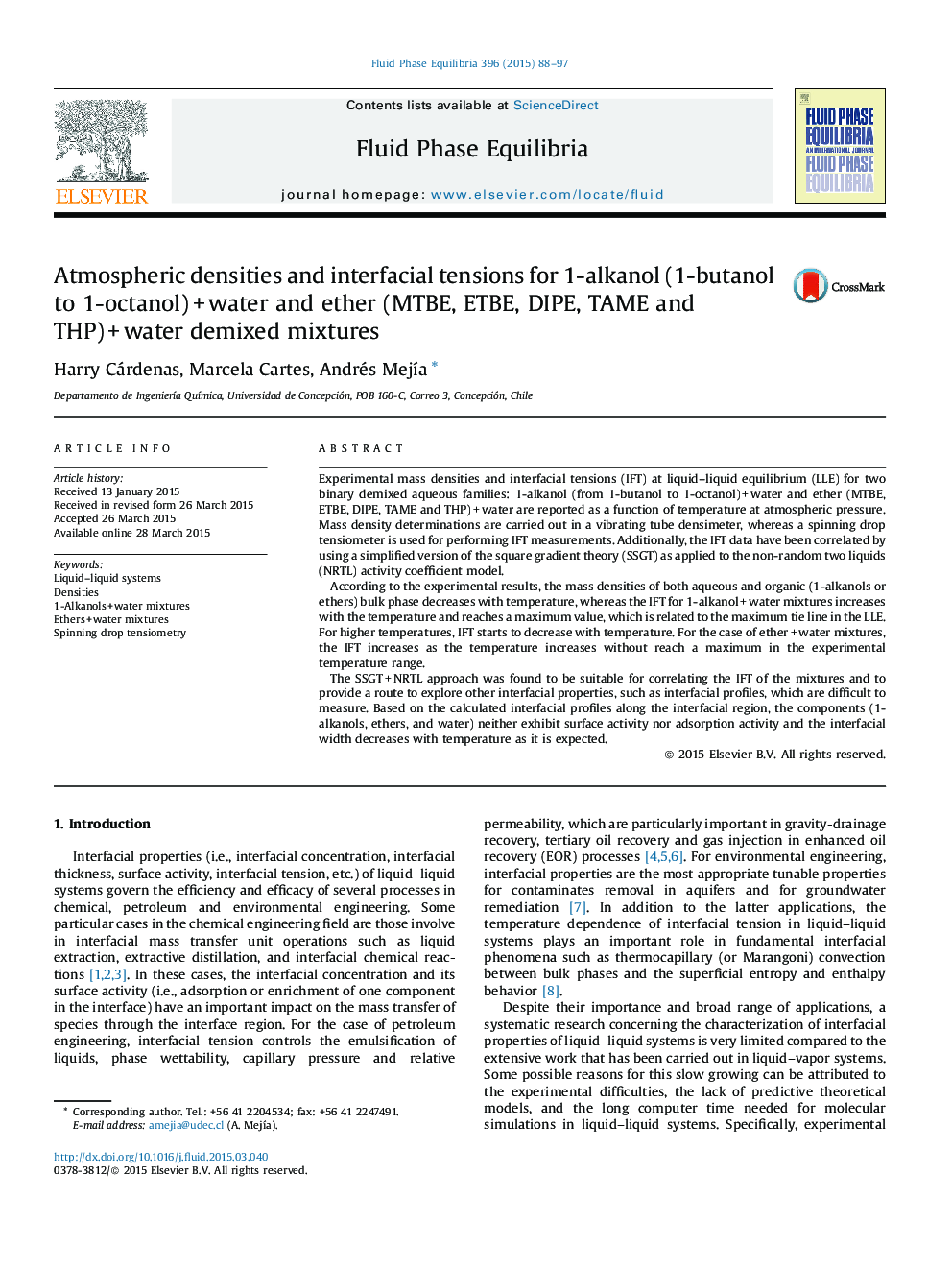| کد مقاله | کد نشریه | سال انتشار | مقاله انگلیسی | نسخه تمام متن |
|---|---|---|---|---|
| 201568 | 460557 | 2015 | 10 صفحه PDF | دانلود رایگان |

• Interfacial tension in liquid–liquid equilibria.
• Densities and interfacial tension for 1-alkanol + water mixtures.
• Densities and interfacial tension for ethers + water mixtures.
• Simplified square gradient theory for liquid–liquid mixtures.
• Correlation of interfacial tension for binary demixed aqueous systems.
Experimental mass densities and interfacial tensions (IFT) at liquid–liquid equilibrium (LLE) for two binary demixed aqueous families: 1-alkanol (from 1-butanol to 1-octanol) + water and ether (MTBE, ETBE, DIPE, TAME and THP) + water are reported as a function of temperature at atmospheric pressure. Mass density determinations are carried out in a vibrating tube densimeter, whereas a spinning drop tensiometer is used for performing IFT measurements. Additionally, the IFT data have been correlated by using a simplified version of the square gradient theory (SSGT) as applied to the non-random two liquids (NRTL) activity coefficient model.According to the experimental results, the mass densities of both aqueous and organic (1-alkanols or ethers) bulk phase decreases with temperature, whereas the IFT for 1-alkanol + water mixtures increases with the temperature and reaches a maximum value, which is related to the maximum tie line in the LLE. For higher temperatures, IFT starts to decrease with temperature. For the case of ether + water mixtures, the IFT increases as the temperature increases without reach a maximum in the experimental temperature range.The SSGT + NRTL approach was found to be suitable for correlating the IFT of the mixtures and to provide a route to explore other interfacial properties, such as interfacial profiles, which are difficult to measure. Based on the calculated interfacial profiles along the interfacial region, the components (1-alkanols, ethers, and water) neither exhibit surface activity nor adsorption activity and the interfacial width decreases with temperature as it is expected.
Figure optionsDownload as PowerPoint slide
Journal: Fluid Phase Equilibria - Volume 396, 25 June 2015, Pages 88–97